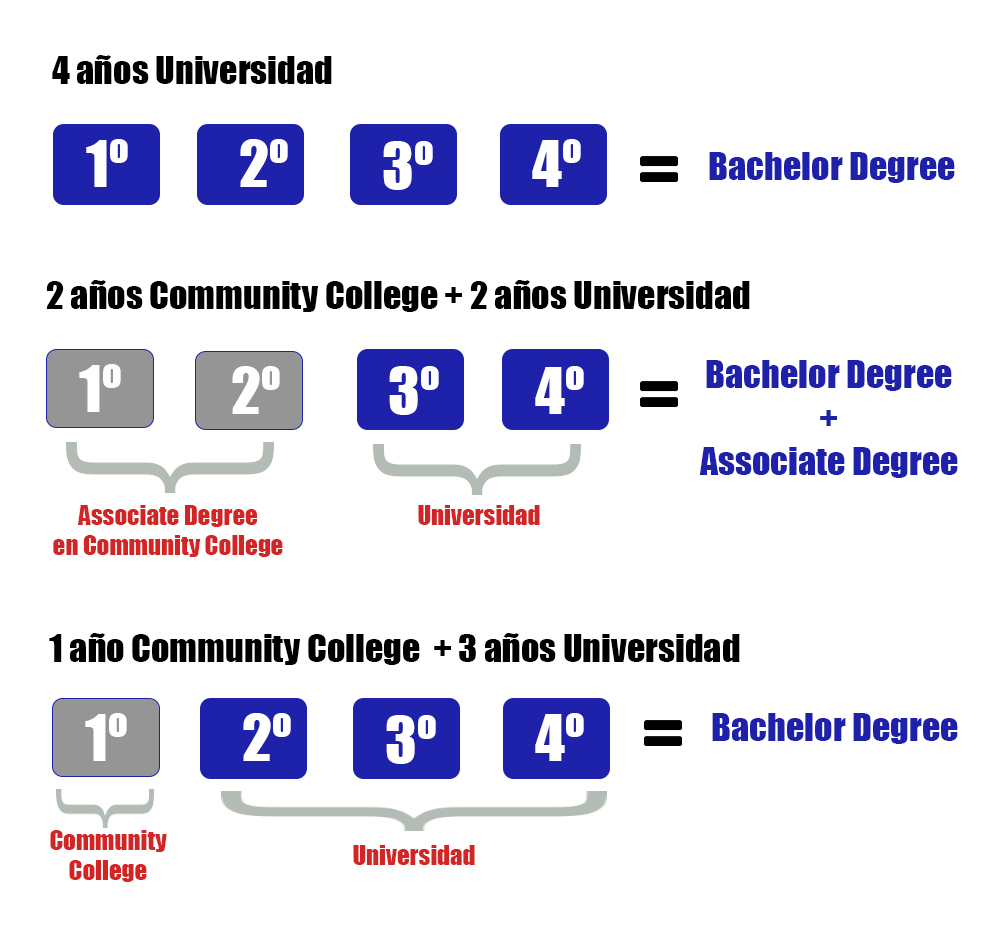In the United States there are three types of higher education institutions; Universities, Colleges and Community Colleges or Junior Col leges. Below, we will explain the main differences between these educational institutions.
UNIVERSITIES
These would be the institutions that in Spain we know as Universities. They offer a wide range of undergraduate, postgraduate, masters and doctoral programs. They are universities with a large number of students and can be public or private.
The biggest difference between American and Spanish universities is the educational system. In the United States, general subjects are studied in the first and second year, not so specific to the career you are going to pursue. To the point that an ADE student can study the same subjects as a Chemical Engineering student. They advocate that any graduate student should have certain general notions. There is also something that distinguishes American university education from Spanish university education, and that is that teaching is given in a much more practical way. Classes are more participatory and assignments and projects carry more weight than an exam. The majority of Spanish students, if not all, pass all the subjects and do not find it torturous to pass the degree in the established years, which are 4 for most degrees.
Finally, it is worth noting the international prestige of American universities. In the QS World University Rankings, 5 American universities appear in the top 10 worldwide.
Access to top universities in the USA is not so easy, it requires a great preparation, as well as a large budget. At MAE we have direct access, without the need to take entrance tests or exams, to universities within the Top 150 in the USA. We call this program GlobalMAE and you can read more about it here.
COLLEGES
You may have heard more than once that there are universities that are not called University, but have the word College, for example, Boston College, which is not the same as Boston University.
The main difference between these types of institutions is the academic offerings. Colleges offer bachelor’s degrees, while universities offer bachelor’s, graduate, master’s and doctoral degrees. In addition, they are more focused on liberal arts, humanities and general education careers, rather than technical and/or specific careers.
The number of students in a college is much lower than in a university.
COMMUNITY COLLEGES or JUNIOR COLLEGES
This is an option that is becoming more and more common among Spanish students leaving for the USA.
This is a type of institution that allows you to graduate with a 2-year degree in the area of your choice.
Associate Degree
in the area of your choice. It would be equivalent to what we know today as a diploma, but with the great difference that you can continue your studies at the university, accessing directly to the third year of your degree.
We recommend this option to those students who:
- Have a lower budget but are totally convinced that they want to go to study in the USA.
- Students who do not have good grades on their school transcript.
- Athletes who have had a bad season and want to improve their marks in order to get better offers from universities.
The advantages of a Junior College are:
- Associate Degree in 2 years.
- OPT (permission to work in the US) after finishing the 2 years, then you can go back to college and finish a degree.
- Possibility of transferring to a university after the first year
- You can improve your GPA and then get into a university that did not accept you because of your grades.
- Cheaper than a university.
- College coaches scour NJCAA leagues for new signings.
- You enter your third year and end up graduating with the same degree as a student who started in the first year at a university.
Here are the 3 university options:
- 4-year University or College: You graduate after 4 years with a Bachelor’s Degree.
- 2 years of community college + 2 years of university: You may or may not graduate with an Associate Degree (not required) and then transfer to a third year university to obtain a Bachelor’s Degree in 4 years.
- 1 year community college + 3 years university: This option would be to do a first year of university credits with the clear objective of transferring to a university the following year. It is intended primarily for:
-
- Athletes who want to improve their marks and college coaches can get a better look at them and thus get a good offer at the college they want.
- Students who need to improve their GPA in order to be admitted to other universities.


Academic, international and athletic scholarships are available at universities, colleges and community colleges. They can be combined with each other.
The MAE Sports & Education team works daily to get the best option for each family, according to the profile of each student and their preferences, advising at all times.








